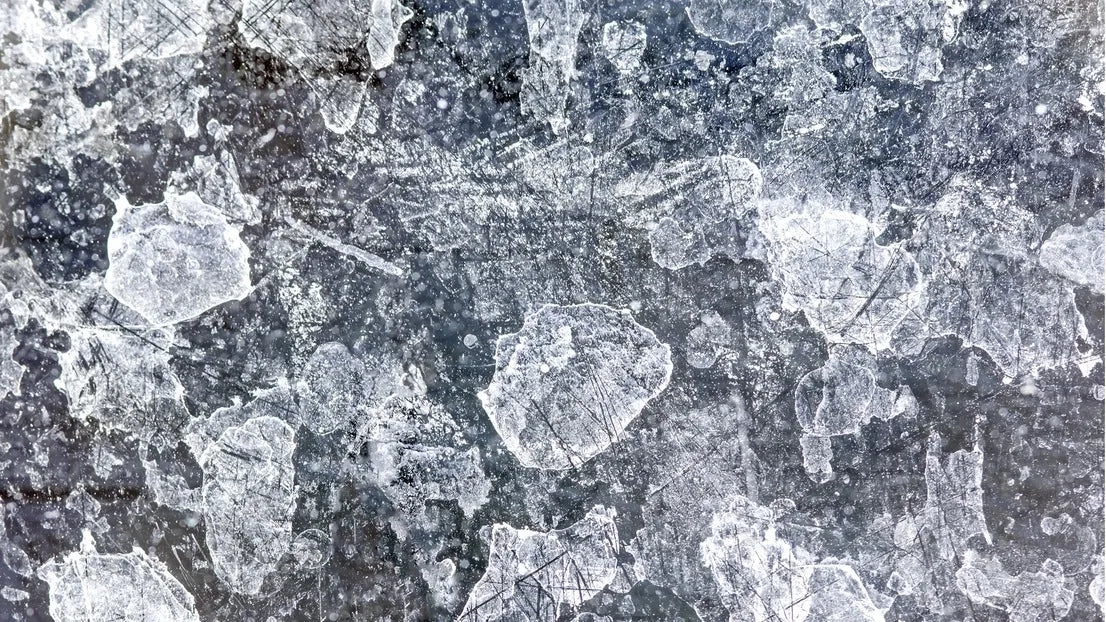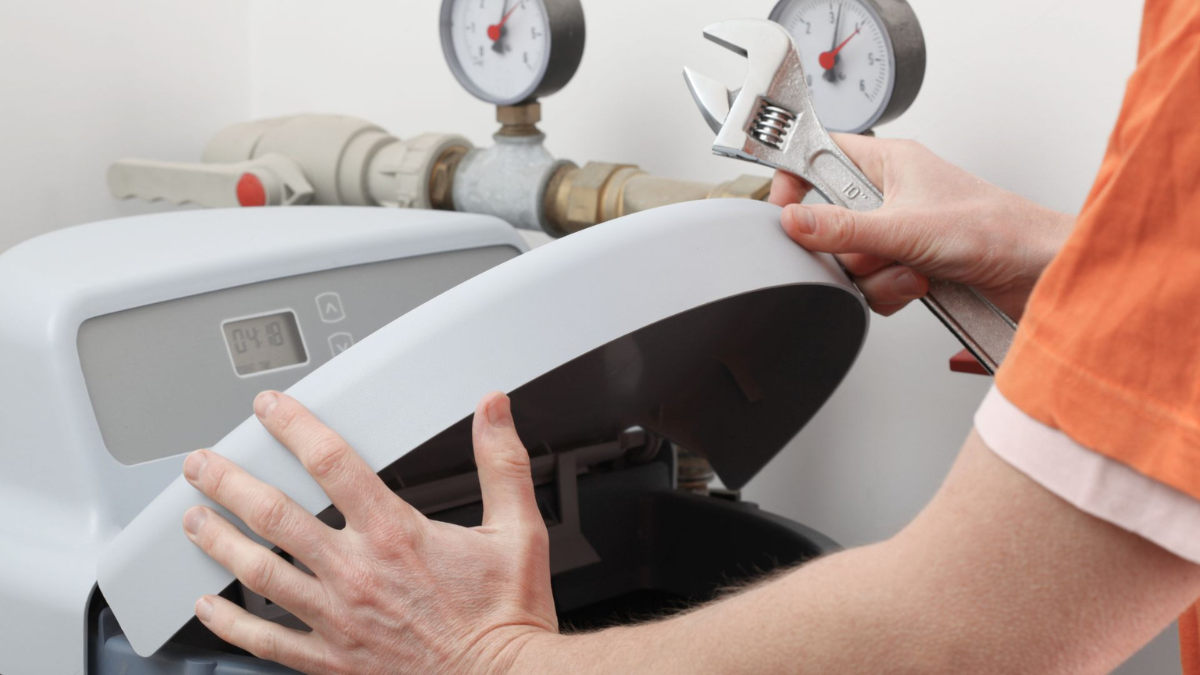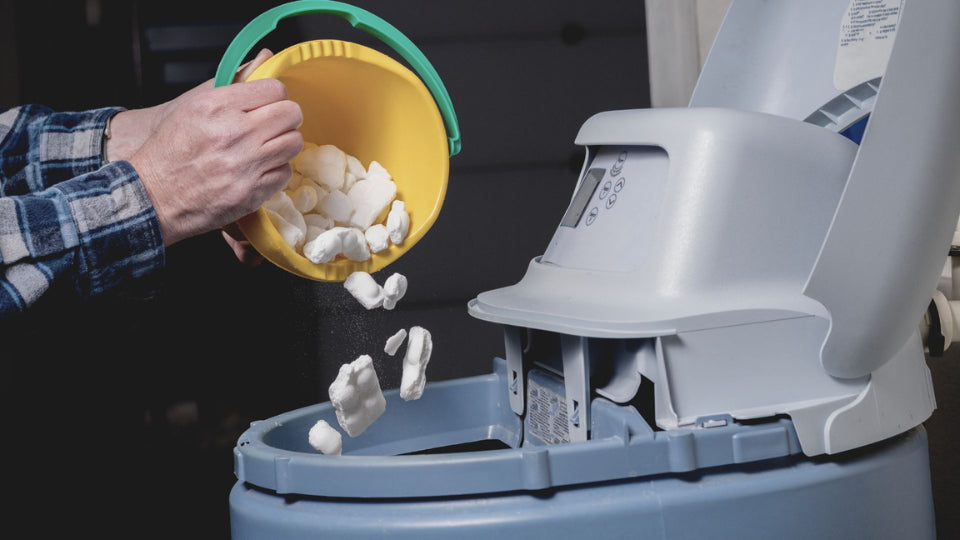Kalkhaltiges, hartes Wasser kann im Alltag zu einer Vielzahl an Problemen führen. Recht harmlos sind Kalkflecken auf Armaturen und anderen Flächen in Badezimmer und Küche. Doch auch sie stören und können sich mit der Zeit festsetzen, wodurch sie nur noch schwer zu entfernen sind. Für größere Schwierigkeiten sorgen Kalkablagerungen in Haushaltsgeräten wie Boilern, Geschirrspülern oder Waschmaschinen. Das Wasser kann nicht mehr richtig ablaufen, wodurch der Energieverbrauch und somit die Kosten beim Einsatz der Geräte steigen. Auf Dauer sind die Geräte in Folge dessen nicht mehr funktionsfähig. Um Kalk vorzubeugen, sind Entkalkungsanlagen mit Salz und Enthärtungsanlagen ohne Salz, sogenannte Kalkschutzanlagen, beliebt. Während Wasserenthärtungsanlage mit Salz weit verbreitet sind, fragen sich viele Verbraucher, ob und wie Wasserenhärtungsanlagen ohne Salz funktionieren. Informieren Sie sich über die Anfänge von Entkalkungsanlagen und lernen Sie mehr über die Entkalkung mit und ohne Salz.

Bild: AQON PURE ist eine umweltfreundliche Enthärtungsanlage ohne Salz
Entkalkungsanlage ohne Salz: Begriffsdefinition
Das Wichtigste vorab: Der Begriff Entkalkungsanlage ist rechtlich nicht geschützt. Oftmals ist alleine anhand der Begriffe Entkalkungsanlage, Wasserenthärtungsanlage oder Weichwasseranlage nicht ersichtlich, um welches Produkt oder Technologie es sich handelt. Manche Produkte verringern die Wasserhärte tatsächlich, andere belassen die Menge an Kalk im Wasser unverändert. Grundsätzlich kann man sagen, dass Wasserenthärtungsanlagen mit Salz (Ionenaustauscher) die Wasserhärte reduzieren - das Wasser wird weicher. Wasserenthärtungsanlagen bzw. Entkalkungsanlagen ohne Salz, sogenannte Kalkschutzanlagen, führen in der Regel zu keiner Verringerung der Wasserhärte.
Wasser-Entkalkungsanlagen mit Salz: Geschichte
Wasseraufbereitung ist schon seit Jahrzehnten ein Verfahren, das eingesetzt wird, um den Rohstoff Wasser besser nutzen zu können. Im Laufe der Zeit sind unterschiedliche Verfahren entstanden, um die Wasserhärte zu vermindern. Viele dieser Verfahren enthärten das Wasser mit Salz, später wurden neue und innovative Möglichkeiten entwickelt, um Wasserenthärtungsanlagen ohne Salz zu betreiben.
Eines der ältesten Verfahren zur Enthärtung von Wasser ist das Kalk-Soda-Verfahren. Dieses Verfahren wurde im 19. Jahrhundert im Zuge der Industrialisierung verwendet. Damals wurden Dampfmaschinen erstmals in großem Stil zum Antrieb verschiedener Maschinerie, wie zum Beispiel für Pumpen in Bergwerken, Textilmaschinen, Schiffe und nicht zuletzt für die Dampflokomotive, eingesetzt. In einer Dampfmaschine wurde Wasser durch Erhitzen in Wasserdampf umgewandelt. Wurde hierfür hartes Wasser eingesetzt, blieben in der Dampfmaschine Kalkrückstände zurück, die die Funktionsfähigkeit der Maschine auf Dauer einschränkten.
Um dem vorzubeugen, wurde das Wasser vorab durch das Kalk-Soda-Verfahren enthärtet. Soda, also Natriumcarbonat, ist ein Salz der Kohlensäure, das die Gesamthärte von Wasser auf weniger als 2,0 °dH (deutscher Härte) vermindern kann. Das Kalk-Soda-Verfahren war also ein Vorreiter von modernen Entkalkungsanlagen mit Salz (Ionenaustauschern), die Kalk mithilfe von Natirumchlorid umwandeln. Damals wie heute erhöht sich durch die Zugabe von Salzen der Natriumgehalt des Wassers. Besonders bei Trinkwasser kann dies zu Problemen führen, gerade wenn der Natirumgehalt des Wassers schon vor der Entkalkung relativ hoch ist. Die Trinkwasserverordnung schreibt einen maximalen Natriumgehalt von 200 mg/l vor. Um die Nachteile von Wasserenthärtungsanlagen mit Salz (Ionenaustauschern) zu vermeiden, wurden sogenannte Kalkschutzanlagen entwickelt. In diesem Zusammenhang spricht man umgangssprachlich auch von Wasserenthärtung ohne Salz.
Methoden zur Wasserenthärtung ohne Salz
Um eine Natriumerhöhung im Wasser aufgrund von Entkalkungsanlagenmit Salz zu vermeiden, wurden im Laufe der Zeit Alternativen in Form von Enthärtungsanlagen ohne Salz konzipiert. Bei vielen Methoden für Entkalkung ohne Salz sollen auf verschiedenen Arten sogenannte Impfkristalle gebildet werden. Diese bieten einen Anlagerungspunkt für Kalk im Wasser, sodass Kalk sich nicht festsetzt und stattdessen ausgespült wird. Wann und durch wen das Phänomen der Impfkristallbildung entdeckt wurde, ist unklar.
Um im Wasser Impfkristalle zu bilden, gibt es eine Reihe an unterschiedlichen Methoden. In einer Studie aus dem Jahr 2003 des Deutschen Verein des Gas- und Wasserfaches (1) werden 4 Verfahren beschrieben, die ohne Salz Kalkablagerungen in der Trinkwasserinstallation reduzieren sollen:
Elektrochemische Systeme
Bei elektrochemischen Methoden zur Wasserenthärtung ohne Salz gibt es verschiedene Hypothesen, inwiefern die eingesetzten Kräfte die Bildung von Kalk verhindern können. Generell soll im Wasser eine Unterspannungsabscheidung erzeugt werden, durch die OH-Ionen entstehen, die den pH-Wert erhöhen. Die Übersättigung soll zu einem Ausfall von Calciumcarbonat (CaCO3) führen – diese ausgefallenen Ca-CO3-Kristalle werden zu Impfkristallen, die unerwünschten Kalk aus dem Wasser transportieren.
Elektrogalvanische Systeme
Bei elektrogalvanischen Kalkschutzanlagen werden innerhalb des Systems Bauteile mit einer edleren Gehäusewand und einer Opferanode aus Metall, zum Beispiel Zink, verbaut. Das ins Wasser abgegebene Zink soll als Zentrum für das Wachstum von Kalkkristallen dienen.
Heterogene Katalyse
Zur Kalkschutzwirkung durch die heterogene Katalyse wird ein Granulat aus besonderen Polymeren ins Wasser gegeben. Dadurch sollen sich Impfkristalle auf der Oberfläche des Polymers bilden, die unerwünschten Kalk abtransportieren.
Entkalkungsanlage ohne Salz: Wirksam?
Die Wirksamkeit von Kalkschutzgeräten wurde bzw. wird teilweise als wissenschaftlich umstritten bezeichnet. Es gibt jedoch Unterschiede zwischen den einzelnen Technologien & Verfahren, sodass z.B. seit mehreren Jahren für bestimmte Produkte Wirksamkeitsuntersuchungen vorliegen.
Die Wirksamkeit von Entkalkungsanlagen mit Salz (Ionenaustauschern) wird in Fachkreisen weitgehend nicht in Frage gestellt, da die Verringerung der Wasserhärte (Enthärtung) z.B. mit einem klassischen Härtemessbesteck nachgewiesen werden kann. Doch die oben genannte Studie aus dem Jahr 2003 des Deutschen Verein des Gas- und Wasserfaches (1) macht auch deutlich, dass bestimmte Typen von Kalkschutzanlagen funktionieren: Es gibt z.B. Produkte der Kategorien elektrochemische Systeme sowie der heterogenen Katalyse, die durch Impfkristallbildung wirksam Kalkablagerungen reduzieren. Im Bereich der Magnet- und Elektrofeldsysteme weisen die Autoren der Studie „Trinkwasseraufbereiter“ Wricke und Baumgardt aus dem Jahr 2003 daraufhin, dass zum Zeitpunkt der Veröffentlichung der Studie im Jahr 2003, wissenschaftlich lediglich Einzeleffekte nachgewiesen wurden und gegensätzliche Meinungen zu der Wirkungsweise dieser Systeme existieren. Ähnlich äußern sich die Autoren in Bezug auf elektrogalvanischen Systeme.
Worauf die Studie keine Antwort gibt ist, ob Entkalkungsanlagen mit Salz oder Enthärtungsanlagen ohne Salz besser sind. Zwar reduzieren Wasserenthärtungsanlagen mit Salz nachweislich die Wasserhärte um Kalkablagerungen zu reduzieren, doch es gibt eben auch Kalkschutzanlagen ohne Salz, die wirksam Kalkablagerungen reduzieren. Wichtig in diesem Zusammenhang ist, dass Wasserenthärtungsanlagen mit Salz einige Nachteile aufweisen wie z.B: Anstieg des Natriumwertes und laufende Kosten durch regelmäßige Wartung.
Vorteile von Entkalkungsanlagen ohne Salz
Stehen Sie vor der Entscheidung, ob Sie in eine Wasserenthärtungsanlage mit Salz oder eine Kalkschutzanlage ohne Salz investieren sollen? Diese Vorteile bietet Ihnen eine Kalkschutzanlage:
- Trinkwasserqualität: Bei der Wasserenthärtung ohne Salz wird der Natriumgehalt des Wassers nicht erhöht. Da Kalk nur ausgeschwemmt und nicht dem Wasser entzogen wird, bleiben die gesundheitlich bedeutenden Mineralien Calcium und Magnesium im Leitungswasser erhalten.
- Einbau: Beim Einbau einer Enthärtungsanlage mit Salz benötigen Sie ausreichend Platz, um Anlage und Salzbehälter zu installieren. Außerdem wird ein Abwasseranschluss benötigt. Viele Kalkschutzanlage können unkomplizierter und platzsparender an der Trinkwasserinstallation verbaut werden. Nur bei bestimmten Typen von Kalkschutzanlagen wird ein Abwasseranschluss benötigt. Hier finden Sie weitere Information zum Einbau von Enthärtungsanlagen.
- Kosten: Viele Kalkschutzanlagen ohne Salz sind vollkommen wartungsfrei. Bei vielen Anlagen müssen außerdem z.B. erst nach mehreren Jahren bestimmte Bauteile wie Wirkeinheiten oder Granulate erneuert werden. Dadurch sind die laufenden Kosten einer Kalkschutzanlage in vielen Fällen häufig geringer als die einer Entkalkungsanlage mit Salz.
- Wasserverbrauch: Aufgrund der Regeneration des Wasserenthärters (Ionenaustauschers) mithilfe von Natriumchlorid steigt der Wasserverbrauch bei der Entkalkung mit Salz an. Dem gegenüber gibt es viele Kalkschutzanlagen, die kein zusätzliches Abwasser produzieren.
Wasserenthärtung ohne Salz neu gedacht mit AQON PURE
Sie suchen eine Enthärtungsanlage ohne Salz, sind Sie bei AQON PURE an der richtigen Adresse. Auf unserer Übersichtsseite zum Thema Einfamilienhaus finden Sie direkt das richtige System für Ihr Zuhause. Schicken Sie uns noch heute eine unverbindliche Angebotsanfrage und erhalten Sie ein unverbindliches Angebot für Ihre Wasser-Entkalkungsanlage ohne Salz von AQON PURE.






